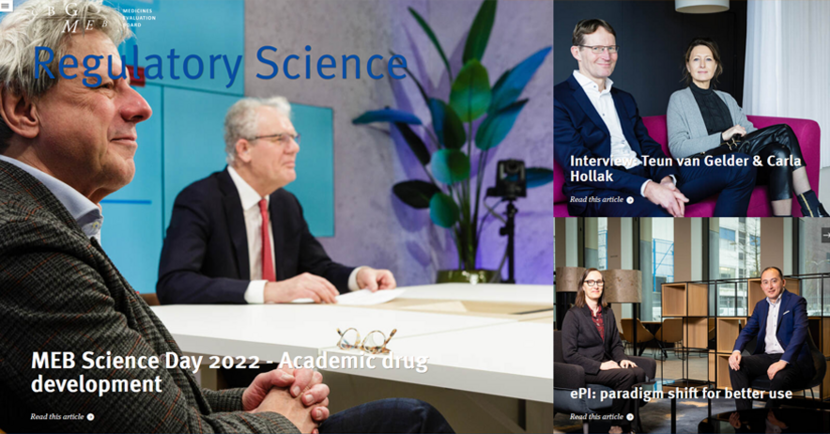Regulatory Science Magazine on academic drug development
The academic world plays a key role in drug discovery and development. However, bringing drugs to market is challenging and demanding. How can we help move academic drug development forward? The 14th edition of our online science magazine focuses on this topic.
The annual MEB Science Day is the main topic of this edition of the Regulatory Science Magazine. Several speakers shared their views on academic drug development and all the challenges clinical and academic researchers have to deal with in the drug development process.
Academic Pharma
Besides an extensive report about the Science Day, the magazine also features an interview with Teun van Gelder and Carla Hollak. Both were speakers during the day and in the interview they elaborate on the subject. “Academic Pharma is one of the research themes of the LUMC”, says Teun van Gelder, who is a professor of clinical pharmacology at the LUMC in Leiden. Close collaboration between the industry and the academia is key: “In Leiden there is an environment in which expertise and facilities are present, allowing for closer collaboration and thus contributing to more successful academic pharma.”
Medicine for society
Carla Hollak, professor of Metabolic Diseases in Amsterdam, agrees with Teun van Gelder. Her initiative Medicijn voor de Maatschappij (‘Medicine for Society’) works to ensure durable availability (and affordability) for medicines for rare diseases. “We need to explore new forms of collaboration. ‘Medicijn voor de Maatschappij’ is learning on the job. I strongly believe in the bottom-up approach. Build a case around a much needed medicine. And show how these can reach the patients: through new public-private collaborations or novel regulatory pathways.”
European collaboration
The third feature story in this edition focuses on the development of a new common European standard for electronic Product Information (ePI). Erol Hofmans (MEB) and Elizabeth Scanlan (European Medicines Agency EMA) explain the potential benefits. Erol: “Electronic formats can be used to provide product information to patients and healthcare professionals in a more user-friendly format. Complementing the package leaflet, ePI provides information that is always up to date. It might even become possible to customise information for specific patient groups.”
From the science perspective, ePI also has potential. Elizabeth: “Linking to master databases for medicines and moving from pdf documents to a common standard will open up numerous possibilities for analysis, the use of apps and artificial intelligence and more.”
Besides the feature stories, Regulatory Science Magazine 14 also pays attention to recent scientific projects in which the MEB has an involvement, ranging from student projects and PhD projects to workshops and events.
